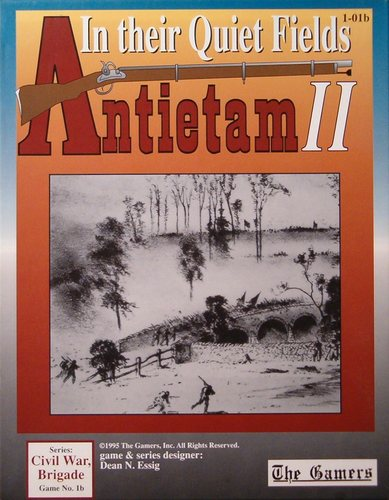I ordered the following games a couple of days ago. They have a unique command rule set.
Here is part of a review for one of the games on BGG (http://boardgamegeek.com/thread/2329...were-million):
This is the area where CWB differentiates itself from many other games on the Civil War. The player does not have complete control over his units. Before a force can move or engage in serious combat, they must have orders. There are 2 ways for a unit to get orders.
Each turn the army commander has a number command points to create orders. The orders can be given verbally to aides, written, or in person (requiring the army commander go seek out the subordinate). The order can have a "force: (0-2) meaning from "attack if practicable" to "attack immediately or your relief will". The more effort made into producing the order the fewer you can create, but the more likelihood the subordinate will act upon them. Orders are broken into simple moving without fighting or complex - those which have the possibility of fighting.
You have written your order, but you're not done yet, you have to calculate using movement rates on how long it will take an aide to carry the order to the subordinate. This could be up to several turns. Of course by the time the order arrives the situation may change.
Ok now we're ready to go - well… not quite - The subordinate rolls for order acceptance which uses all the factors from above and the ratings of both the subordinate and you as commander. If it is Lee talking to Longstreet - life is good. If it is Bragg hectoring Polk well you get the drift. Three things can happen - the order may be discarded (you want me to do what?), It may be accepted (yes sir!), most likely it will be delayed - (As soon as I get my troops together we will get going.)
The other way to get orders is roll for initiative, the subordinate sees an opportunity and creates his own order. Again three things can happen 2 of them bad. You may get to write new orders, most likely nothing will happen and there is a small chance you may get a "loose cannon" result where your opponent writes an order for you to execute next turn. (Hello Dan Sickles).
What makes up an order, and yes you should write them down to give guidance when moving the subordinate commands. I try to keep them succinct and provide an approach path along with a single objective. For example:
Advance down Corinth-Pittsburg road - capture crossroad next to Water Oak pond
Defend the sunken road next to the peach Orchard.
Support the attack by 3 Corps by demonstrating across Duncan Field. (this means you want the unit to fire at a distance but not press home an attack).
Now that you got your orders all is well, again not quite, each turn when executing the order you roll for corps stoppage, based on the condition of the troops and the commander. A better (higher rated) commander has a tendency to press home the attacks then a low one. As more Brigades get shot up the odds of failing the check goes up as well. This covers a reluctance of commanders to continue making attacks or holding a position in the face of mounting casualties.
The command system sounds complex but in reality all you are trying to do is describe what your subordinate units can do, it does require you to play within the spirit of your orders. The system forces you to plan ahead, expect that things will not work the way you want, delays and missed opportunities will occur. It will be frustrating to not get an attack launched until the enemy is ready, a hole in the line unexploited, a successful attack called off when one more push would finish them off. CWB are excellent in showing how things worked for the commanders, but can make for a poor competitive game. Since I play wargames mainly for historical insight, I find this a plus.







 Reply With Quote
Reply With Quote
Bookmarks